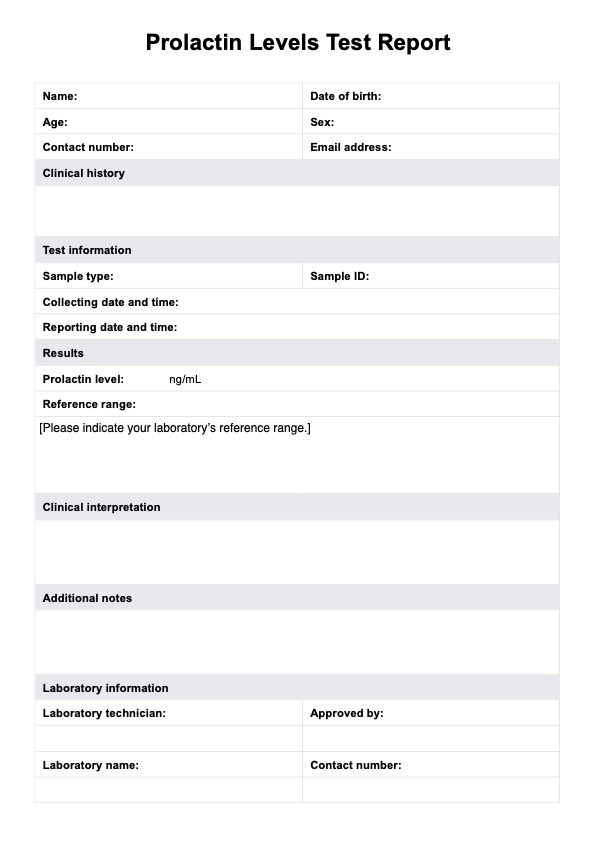Prolactin test results are measured in nanograms per milliliter (ng/mL) and interpreted based on age, sex, and physiological conditions such as pregnancy. Normal levels are typically below 20 ng/mL for men, below 25 ng/mL for non-pregnant women, and between 80–400 ng/mL for pregnant women (UCSF Health, 2022). Deviations may indicate hormonal imbalances or underlying medical conditions.

Prolactin Levels Test Reports
Get a free Prolactin Levels Test Report template. Learn about the importance of this test and how to interpret results.
Prolactin Levels Test Reports Template
Commonly asked questions
Prolactin levels above 25 ng/mL in non-pregnant women or 20 ng/mL in men may be concerning and could indicate hyperprolactinemia. Levels exceeding 200 ng/mL often suggest a prolactinoma, a benign pituitary tumor that requires further evaluation.
A prolactin test is not part of a complete blood count (CBC). It is a specific hormone test used to measure prolactin levels in the blood and assess pituitary function. It is often ordered separately when hormonal imbalances or related symptoms are suspected.
EHR and practice management software
Get started for free
*No credit card required
Free
$0/usd
Unlimited clients
Telehealth
1GB of storage
Client portal text
Automated billing and online payments











